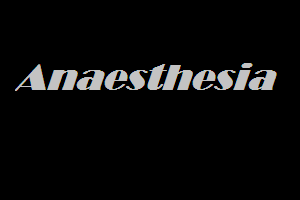- Home
- Editorial
- News
- Practice Guidelines
- Anesthesiology Guidelines
- Cancer Guidelines
- Cardiac Sciences Guidelines
- Critical Care Guidelines
- Dentistry Guidelines
- Dermatology Guidelines
- Diabetes and Endo Guidelines
- Diagnostics Guidelines
- ENT Guidelines
- Featured Practice Guidelines
- Gastroenterology Guidelines
- Geriatrics Guidelines
- Medicine Guidelines
- Nephrology Guidelines
- Neurosciences Guidelines
- Obs and Gynae Guidelines
- Ophthalmology Guidelines
- Orthopaedics Guidelines
- Paediatrics Guidelines
- Psychiatry Guidelines
- Pulmonology Guidelines
- Radiology Guidelines
- Surgery Guidelines
- Urology Guidelines
A Case of Delayed Cardiac Arrest following Spinal Anesthesia

Though spinal anesthesia has become an integral part of the modern day anesthesia practice and is considered to be a relatively safer technique, life-threatening complications are reported to occur under spinal anesthesia. The case which appears in the Journal of Medical Case Reports highlights the occurrence of unanticipated delayed cardiac arrest following spinal anesthesia in a 25-year-old Cameroonian man.
The case study analysis brings forth the importance of vigilant monitoring and prompt intervention in the management of sudden cardiac arrest under spinal anesthesia in a low-resource setting.
The patient was recently operated on for acute appendicitis in Banso Baptist Hospital, Northwest Cameroon and all the preoperative investigations, including routine blood biochemistry, chest X-ray posterior and anterior view, and 12-lead electrocardiograms were normal. In the operating theater (OT), routine monitoring included heart rate 78 beats/min, electrocardiogram, noninvasive blood pressure (BP) 120/78 mmHg, and pulse oximetry with SpO2 at 99% in room air which reveals that the baseline parameters were normal.
Almost 25 min after the subarachnoid injection, the patient started complaining of difficulty in breathing and this was followed by a convulsion. The sensory level was rechecked and was found to be at T10. A bolus of atropine 0.6 mg was administered as his heart rate suddenly dropped to 40 beats/min, SpO2 to 65%, while his BP became unrecordable and peripheral pulses could not be palpated.
The patient was immediately intubated with a cuffed endotracheal tube (ETT) of 7.5 mm and positive pressure ventilation initiated with Bain circuit and 100% oxygen was administered. His heart arrested and cardiopulmonary resuscitation (CPR) was started immediately with pharmacologic intervention with adrenaline and dopamine and intravenous normal saline infusion.
Within 4 min, the patients responded with a heart rate of 140 bpm, SpO2 of 90%, and BP of 90/60 mmHg. The patient was restless even after administration of injection of diazepam 10 mg, and phenytoin 1.5 g in IV infusion, so he was administered 150 mg propofol and was paralyzed with 6 mg vecuronium and electively ventilated in the OR. Apart from sinus tachycardia, all investigations results including serum electrolytes, complete blood counts, and chest X-ray were normal. The patient was adjudged by both the anesthetist and attending surgeon as being fit enough to proceed for the emergency open appendicectomy via a Lanz incision with an uneventful postoperative course.
After 2 hr of elective ventilation and achievement of hemodynamic stability, the patient became conscious and started responding to verbal commands with good respiratory efforts, and extubation was done after reversing the relaxant effect with standard doses of neostigmine and glycopyrrolate. The patient was discharged on the 4th postoperative day. The follow-up visits at the 2nd, 4th, and 10th week in the postoperative period showed satisfactory clinical status.
Also Read: Ultrasound guided technique for ibSLN block improves quality of anaesthesia
The mechanism that triggers severe bradycardia and the etiology of cardiac arrest under spinal anesthesia is still vague. Oversedation, respiratory arrest, unintentional total spinal, myocardial infarction, and local anesthetic toxicity have all been suggested as the causative factors. Cardiac arrest has been reported within 12–72 min of spinal anesthesia, while other cardiovascular side effects have been reported as late as 3–5 hr after the administration of spinal anesthesia.
The authors concluded that the knowledge of the physiologic changes caused by spinal anesthesia and its complications, adequate patient selection, respecting the contraindications of the procedure, adequate monitoring, and constant vigilance is of utmost importance to the eventual outcome.
For more reference log on to https://doi.org/10.1186/s13256-018-1648-5

Disclaimer: This site is primarily intended for healthcare professionals. Any content/information on this website does not replace the advice of medical and/or health professionals and should not be construed as medical/diagnostic advice/endorsement or prescription. Use of this site is subject to our terms of use, privacy policy, advertisement policy. © 2020 Minerva Medical Treatment Pvt Ltd